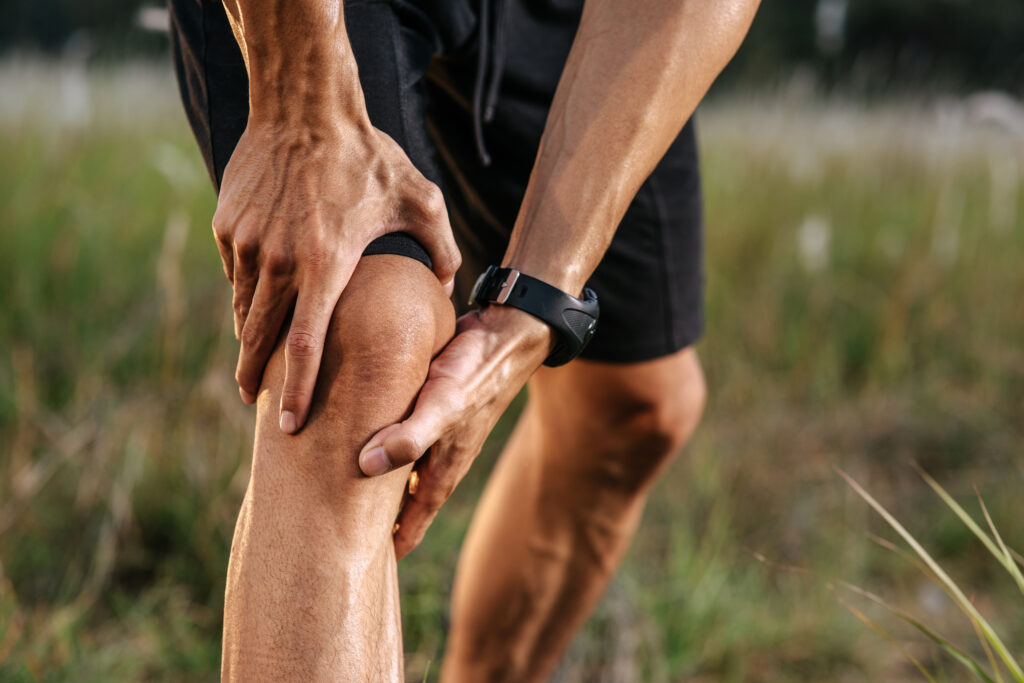If you're looking to enhance athletic performance in Lexington, making targeted adjustments can be key. You might want to contemplate refining your training techniques, optimizing your nutrition, and prioritizing recovery to see significant improvements. By focusing on these elements, you can release your potential and avoid common pitfalls. But what specific strategies can you implement to guarantee you're getting the most out of your efforts? The answers might surprise you, especially when you explore how community resources can play an essential role in your journey.
Training Technique Modifications
Training technique modifications can make a significant difference in your athletic performance. By fine-tuning your approach, you'll likely notice improvements in strength, speed, and overall effectiveness. Start by evaluating your current techniques; identify areas where you may be struggling or experiencing discomfort. Small changes, like adjusting your stance or grip, can drastically impact your results.
One effective modification is focusing on form. Whether you're lifting weights or running, proper form helps you maximize efficiency while minimizing injury risk. Consider working with a coach or using video analysis to pinpoint flaws in your technique. They can provide valuable feedback and help you implement corrective measures.
Another key aspect is incorporating varied training drills. If you continually perform the same exercises, your body may plateau. By introducing new movements or altering the intensity, you challenge your muscles in different ways. This not only enhances your performance but also keeps your workouts engaging.
Additionally, pay attention to the pace of your training. Sometimes, slowing down can improve your technique, allowing you to concentrate on each movement. Conversely, incorporating high-intensity interval training can boost your endurance and speed.
Lastly, don't underestimate the power of recovery. Modifying your training schedule to include rest days or active recovery sessions can help your body adapt and grow stronger.
Nutrition Optimization Strategies
To boost your athletic performance, paying attention to macronutrient balance is essential.
You need the right mix of proteins, fats, and carbohydrates to fuel your workouts and recovery.
Plus, mastering hydration techniques can make a significant difference in your endurance and overall performance.
Macronutrient Balance Importance
Achieving ideal athletic performance hinges on the right macronutrient balance, which fuels your body and aids recovery. To optimize your nutrition, it's important to grasp how each macronutrient—carbohydrates, proteins, and fats—contributes to your performance.
Here are four key aspects to keep in mind:
- Carbohydrates: They're your body's primary energy source, especially during intense workouts. Aim to include complex carbs like whole grains and fruits in your meals.
- Proteins: Necessary for muscle repair and growth, protein intake is critical post-exercise. Incorporate lean meats, dairy, or plant-based proteins into your diet to support recovery.
- Fats: While often misunderstood, healthy fats are fundamental for hormone production and long-term energy. Focus on sources like avocados, nuts, and olive oil.
- Timing: When you consume these macronutrients matters too. Eating a balanced meal or snack before and after workouts can greatly impact your performance and recovery.
Hydration Techniques for Athletes
Many athletes underestimate the importance of proper hydration in their training regimen. Staying hydrated isn't just about quenching your thirst; it directly impacts your performance and recovery. When you're well-hydrated, you'll notice improved endurance, faster reaction times, and enhanced focus during workouts and competitions.
To optimize your hydration, start by evaluating your fluid intake throughout the day. Aim to drink water consistently rather than waiting until you feel thirsty. A good rule of thumb is to drink at least half your body weight in ounces daily. For instance, if you weigh 160 pounds, aim for 80 ounces of water.
During training, especially if it lasts over an hour, consider incorporating electrolyte-rich drinks. These help replenish lost minerals and maintain your energy levels. Remember to hydrate before, during, and after your workouts. A practical tip is to drink about 16-20 ounces of water at least two hours before exercising.
Finally, pay attention to your body's signals. Dark urine usually indicates dehydration, so adjust your intake accordingly.
Recovery Enhancement Practices
Recovery enhancement practices play an essential role in optimizing athletic performance in Lexington. After intense training or competition, your body needs time to heal and rejuvenate.
Implementing effective recovery strategies can markedly improve your performance and help you avoid injuries.
Here are four key recovery enhancement practices you can incorporate into your routine:
- Active Recovery: Engage in low-intensity activities like walking, cycling, or swimming. This helps increase blood flow, reducing muscle soreness and stiffness.
- Stretching and Mobility Work: Incorporate dynamic and static stretching to maintain flexibility and range of motion. This prevents tightness in muscles, making it easier to perform at your best.
- Nutrition and Hydration: Refuel your body with a balanced meal rich in protein, carbohydrates, and healthy fats within 30 minutes of finishing your workout. Staying well-hydrated is also essential for recovery, so drink plenty of water throughout the day.
- Sleep and Rest: Prioritize quality sleep each night. Aim for 7-9 hours to allow your body to repair itself and consolidate muscle memory.
Additionally, don't shy away from scheduled rest days; they're critical for long-term performance gains.
Mental Conditioning Techniques
To boost your athletic performance, mastering mental conditioning techniques is essential.
By practicing visualization and imagery, you can mentally rehearse your goals, while mindfulness and focus techniques help you stay present during competition.
These strategies can transform your mindset and enhance your overall performance.
Visualization and Imagery
Visualization and imagery are powerful mental conditioning techniques that can greatly enhance your athletic performance. By creating vivid mental images of your desired outcomes, you can prepare yourself for competition and improve your skills.
Here's how to effectively use these techniques:
- Set Clear Goals: Define what you want to achieve. Whether it's improving your speed or mastering a specific skill, having clear objectives allows for focused imagery.
- Create Detailed Scenarios: Visualize yourself in action. Picture every aspect of your performance, from your warm-up routine to executing your moves flawlessly during a competition.
- Engage Your Senses: Make your imagery as real as possible. Imagine the sounds of the crowd, the feel of the equipment, and even the emotions you'll experience during the event.
- Practice Regularly: Incorporate visualization into your training routine. Spend a few minutes each day visualizing your performance to reinforce your skills and build confidence.
Mindfulness and Focus Techniques
Building on the mental conditioning techniques, like visualization, mindfulness and focus techniques play an essential role in enhancing athletic performance. These practices help you stay present and attentive, allowing you to perform at your best when it matters most.
To incorporate mindfulness into your training, start by dedicating time to breathe deeply and center yourself before practices or competitions. Focus on your breathing and let go of distractions. This simple act can clear your mind and sharpen your focus.
Additionally, you can use focus techniques during your workouts. Set specific goals for each session, whether that's improving your speed, strength, or technique. While training, concentrate solely on your body's movements and sensations. This heightened awareness helps you fine-tune your performance and respond to your body's needs.
During competitions, practice mindfulness by focusing on the present moment rather than worrying about the outcome. Acknowledge any anxiety, but don't let it derail your performance. Instead, redirect that energy into your next move.
Equipment Upgrades and Adjustments
Upgrading your athletic equipment can greatly enhance performance and prevent injuries.
Whether you're a seasoned athlete or just starting out, investing in the right gear can make a significant difference.
Here are four essential upgrades you should consider:
- Footwear: Guarantee you have the right shoes for your sport. Proper footwear provides support, stability, and cushioning, reducing the risk of injuries like sprains and fractures.
- Protective Gear: Depending on your activity, upgrading to high-quality protective equipment can help safeguard against injuries. Look for items like helmets, knee pads, and mouthguards that fit well and meet safety standards.
- Training Aids: Incorporate specialized training aids into your routine. Resistance bands, agility ladders, and balance boards can enhance your strength, coordination, and overall performance.
- Wearable Technology: Invest in wearable devices that track your progress and performance metrics. Smartwatches and fitness trackers can help you monitor heart rate, distance, and recovery times, allowing you to make data-driven adjustments to your training.
Environmental Factors Consideration
When preparing for athletic performance, considering environmental factors can greatly impact your success. Weather conditions, altitude, and humidity play essential roles in how well you perform. Take a moment to assess the climate before you head out for training or competition. If it's hot and humid, you'll need to stay hydrated and possibly adjust your training intensity. Knowing the forecast can help you plan your workouts more effectively.
Altitude is another significant factor. If you're training in Lexington, you mightn't face extreme elevation changes, but if you travel for competitions, it's imperative to acclimate to different altitudes. Higher altitudes can affect your oxygen levels, so give yourself enough time to adjust before your event.
Don't forget about the surface you're competing or training on. Whether it's grass, turf, or a gym floor, each surface can change your performance and injury risk. Make sure your footwear is suitable for the surface, as this can enhance grip and stability.
Lastly, consider the time of day for your activities. Heat can build up during the afternoon, making it harder to maintain your performance. Early morning or late evening workouts can often yield better results due to cooler temperatures.
Community Support and Resources
In the heart of Lexington, community support and resources play an essential role in enhancing athletic performance.
Whether you're an aspiring athlete or a seasoned competitor, tapping into local resources can make a significant difference in your training and overall success.
Here's how you can benefit from what your community has to offer:
1. Local Sports Clubs: Joining a sports club can provide you with coaching, training partners, and access to specialized facilities.
These clubs often host events and competitions that can elevate your experience.
2. Community Centers: Many community centers offer fitness classes, workshops, and access to gym facilities.
These resources can help you improve your skills while connecting you with like-minded individuals.
3. Health and Wellness Programs: Look out for programs focused on nutrition, injury prevention, and mental health.
Many organizations offer free or low-cost workshops that can give you a competitive edge.
4. Volunteer Opportunities: Engaging in volunteer work within local sports events can enhance your knowledge of the sport.
It's also a great way to network with experienced athletes and coaches who can offer valuable insights.
Conclusion
By focusing on targeted adjustments in your training, nutrition, and recovery, you can markedly enhance your athletic performance in Lexington. Prioritize proper form, balanced nutrition, and quality sleep to fuel your body effectively. Don't underestimate the power of mental conditioning and community support; they can provide motivation and resources that make a real difference. Embrace these strategies, and you'll be well on your way to reaching new heights in your athletic journey.



